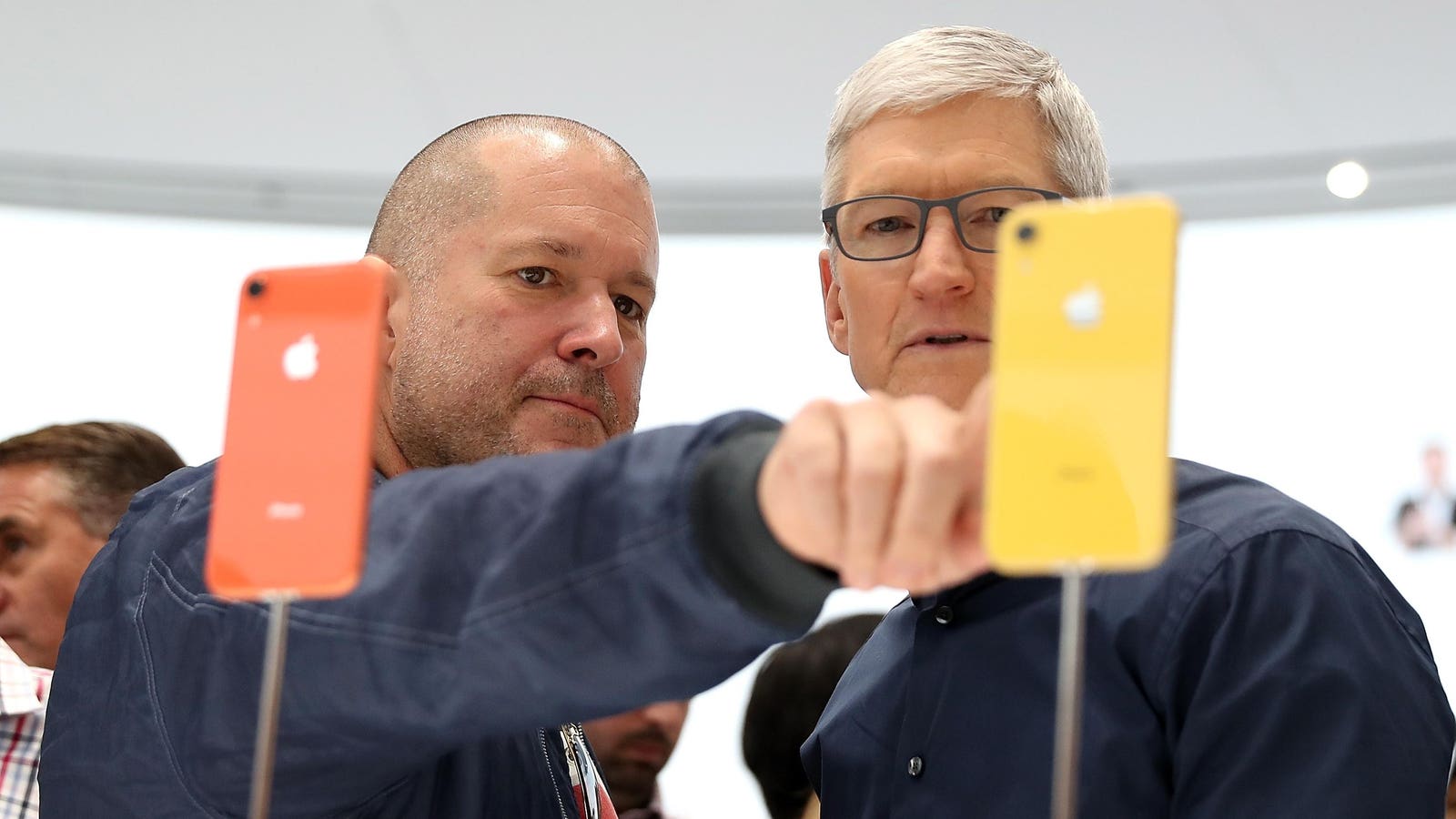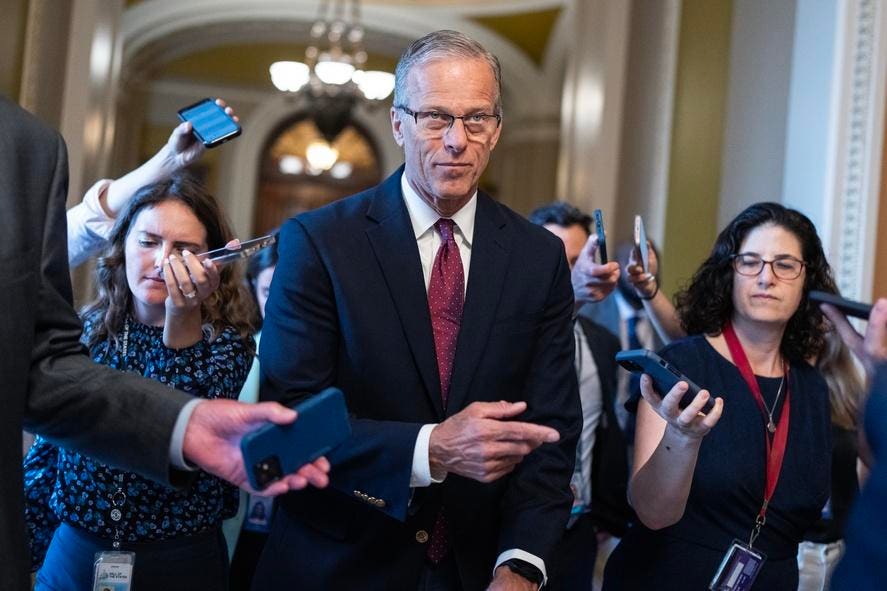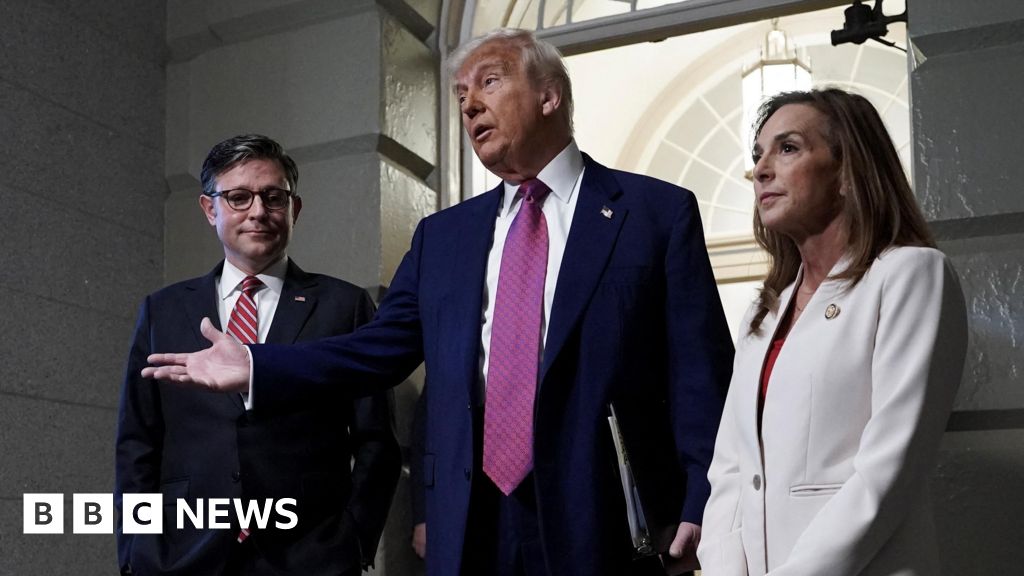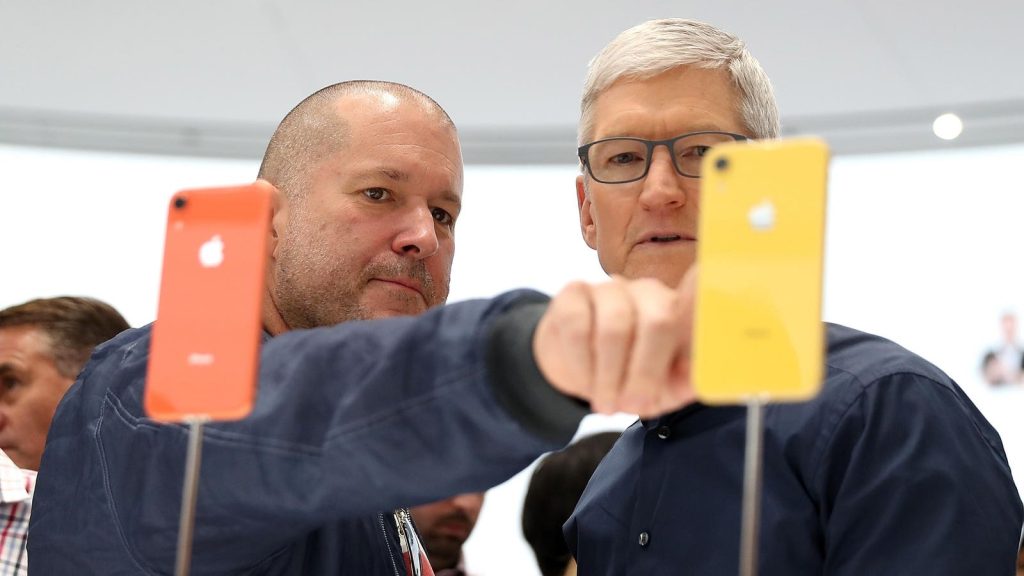Topline
The House approved legislation Thursday that would cut Medicaid spending by nearly $800 billion over the next 10 years, revising President Donald Trump’s so-called “big, beautiful bill” in the final hour to move up the start date for Medicaid work requirements and prohibit Medicaid for gender-affirming care.
President Donald Trump and House Speaker Mike Johnson, R-La., talk with reporters after a House … More Republican Conference meeting on the budget reconciliation bill in the U.S. Capitol on Tuesday, May 20, 2025. (Tom Williams/CQ-Roll Call, Inc via Getty Images)
Key Facts
More than 7.6 million people would lose Medicaid benefits over the next 10 years under the bill, according to an estimate by the nonpartisan Congressional Budget Office made before revisions approved late Wednesday that would enact work requirements three years earlier, among other measures, expected to cut Medicaid spending even more.
The legislation, passed 215-214, largely along party lines, would make changes to Medicaid through four primary measures:
It would implement additional “eligibility and enrollment” rules, including new address verification standards, provider screening requirements and penalties for states that offer coverage to undocumented migrants.
The section addressing “wasteful spending” calls for a prohibition on funding for gender transition procedures for both adults and minors under the federal Medicaid program and the state Children’s Health Insurance Program (CHIP).
One of the ways the bill aims to tamp down on “abusive financing practices” is via a moratorium on new or increased provider taxes states collect to help pay for Medicaid expenses that aren’t covered by the federal government; proponents of the freeze argue states sometimes use the provider taxes to also pay providers, allowing states to report more Medicaid expenses and boost the matching funds they receive from the federal government.
The legislation would increase “personal accountability,” primarily by mandating new “community engagement” requirements for Medicaid recipients to log at least 80 hours per month of work, community service or a work program, or be enrolled in an educational program for at least 40 hours per month—representing the largest Medicaid-related cuts in the megabill, according to the CBO.
Big Number
72 million. That’s the number of people enrolled in Medicaid as of December.
Key Background
Congress approved topline spending goals last month to enact Trump’s agenda, instructing relevant committees in the House and Senate to write policy legislation in line with the new figures. The bill approved Thursday is the result of that work. The Energy and Commerce Committee, which oversees Medicaid, was tasked with finding $880 billion in cuts, and there was virtually no other way to enact them without making changes to Medicaid. Medicaid emerged as a major sticking point for Republicans negotiating the terms of the bill, with those who represent swing districts initially advocating for Medicaid to be left intact and fiscal hawks pushing for even more cuts. It was changed at the final hour to move up the start date for work requirements from 2029 to 2026 to appease hard-liners who threatened to withhold their votes and imperil the bill’s passage. It was also revised to prohibit gender-affirming care for adults, in addition to minors, as the initial version proposed, among other revisions.
What To Watch For
The legislation now heads to the Senate, where the GOP can afford to lose no more than three votes and there are similar divisions among Republicans over Medicaid as in the House.
Why Did Republicans Who Initially Advocated For Medicaid To Be Preserved Change Their Minds?
A small group of House Republicans, including Reps. Don Bacon, R-Neb., and Nicole Malliotakis, R-N.Y., publicly expressed concerns about slashing Medicaid spending, but ultimately voted for the bill. Malliotakis was among eight who are members of the Hispanic Conference or represent districts with sizeable Hispanic populations and sent a letter to House Speaker Mike Johnson, R-La., last month warning “slashing Medicaid would have serious consequences, particularly in rural and predominantly Hispanic communities.” Malliotakis told CNN over the weekend she agreed to accept the Medicaid changes because they target “people in the country illegally” and “people who refuse” to meet work requirements. Bacon said in late April he would accept no more than $500 billion in Medicaid cuts, though it’s unclear why he agreed to a bill estimated to exceed that figure by at least $200 billion.
What Has Trump Said About The Medicaid Cuts?
Trump told reporters Tuesday before meeting with House Republicans “with Medicaid, the only thing we’re cutting is waste, fraud, and abuse.” During the meeting, he told the GOP conference not to “f—- around with Medicaid,” instructing Republicans to keep the program intact as much as possible, according to multiple outlets. Trump, for years, has promised not to cut Medicaid spending, telling NBC on May 4 he would veto a bill that cuts Medicaid. “They’re not cutting it. They’re looking at fraud, waste and abuse, and nobody minds that,” Trump said. “If illegal immigrants are in the mix, if people that aren’t supposed to be there, people that are non-citizens are in the mix, nobody minds that. Waste, fraud and abuse. But we’re not cutting Medicaid, we’re not cutting Medicare, and we’re not cutting Social Security.”
What Does The Bill Say About Medicaid For Immigrants?
The bill would cut the federal matching funds states receive under the Affordable Care Act from 90% to 80% for those that provide health care for undocumented migrants, according to the Kaiser Family Foundation. A total of 33 states and the District of Columbia could be affected by the penalty, according to KFF.
Further Reading
Trump’s ‘Big Beautiful Bill’ Passes House: What That Means For You (Forbes)
Medicaid Cuts Threaten A Key House Vote On Trump’s Agenda Today—Here’s Why The GOP Is Divided (Forbes)











